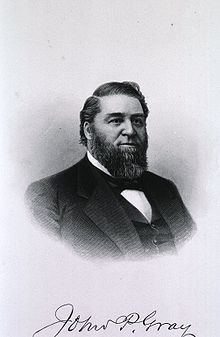Years of service 1939–1942 Name John Gray | Role Psychiatrist | |
 | ||
Born December 22, 1914
Kansas City, Missouri ( 1914-12-22 ) Allegiance United States of America Service/branch United States Naval Reserve Rank Lieutenant, junior grade Battles/wars World War II
*Battle of Midway Awards Navy Cross
Presidential Unit Citation Died November 29, 1886, New York, United States | ||
John P. Gray (1914–1942) was a United States Navy officer who received the Navy Cross posthumously for his actions in combat during World War II.
Contents
Naval career
John Porter Gray was born in Kansas City, Missouri, on 22 December 1914. He enlisted in the United States Naval Reserve on 12 October 1939, was appointed Aviation Cadet in 1940, and underwent flight training, and was commissioned as an ensign. Gray then served at several naval air stations before reporting to Torpedo Squadron 2 in October 1940. He later transferred for temporary duty to Torpedo Squadron 8 aboard the aircraft carrier USS Hornet (CV-8), and reached the rank of lieutenant, junior grade.
As a Douglas TBD-1 Devastator torpedo bomber pilot in Torpedo Squadron 8, Gray took part in the pivotal Battle of Midway on 4 June 1942. Gray and the rest of the squadron gallantly attacked the Japanese aircraft carriers without fighter cover and in the face of withering antiaircraft fire and heavy Japanese fighter opposition. Though all of Torpedo Squadron 8's aircraft were shot down, they succeeded in diverting Japanese fighter cover and preventing further launches of Japanese carrier aircraft, thus contributing mightily to the United States Navy's victory in the battle. Gray was killed during the attack.
Awards
Gray was awarded the Navy Cross posthumously for his heroism, and shared in the Presidential Unit Citation awarded to Torpedo Squadron Eight for its actions in the Battle of Midway.
Commemoration
The U.S. Navy destroyer escort USS John P. Gray (DE-673) was named for Gray. She was converted during construction into the high-speed transport USS John P. Gray (APD-74) and was in commission as such from 1945 to 1946.
